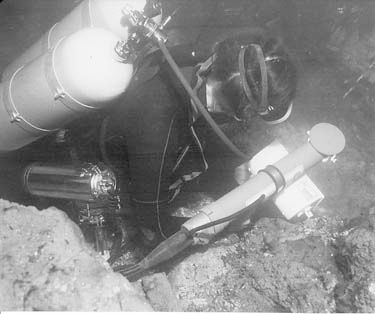David Wilson
Contributor
Yes, 1973 seems like a good enough date for the end of the vintage era, give or talk a year or two. Historians will always tell you that there is never a neat dividing line between one period and the next because there is an intervening period of overlap between the two.
As a lifelong vintage snorkeller, I see the changeover from "vintage" to "modern" in terms of basic gear, namely fins, masks and snorkels, rather than scuba-specific equipment. During the vintage era, rubber full-foot fins and rubber-skirted oval masks were the professional and recreational choice of most European divers and snorkellers. Plastic fins were considered to be either "solution without a problem" gimmicks, as in the case of Caravelle fins with their rubber foot pockets and detachable polypropylene blades, or low-end products for people who couldn't afford proper gear. Silicone-skirted masks were the expensive choice of a small minority of divers with allergies, who complained all the time about clear-skirt yellowing, a phenomenon unknown to wearers of "normal" masks. Then the mid-1970s came along and diving equipment manufacturers told us that all-rubber fins were "history" and the future lay in "composite" fins with foot pockets made from something called "thermoplastic elastomer", which unlike natural rubber needed "formers" to stay in shape, while the blades were made from inflexible plastic, which some sports medicine experts at the time warned might damage tendons. I remember seeing pairs of these compiste fins slowly delaminating in the bargain bin of a London dive store. As for masks, suddenly everybody was supposed to go along with paying a lot more for silicone skirts, because that too was the future for everybody, with or without allergies, and no, they weren't interested in solving the yellowing problem of clear masks. During all this technological change, I decided to stay put, considering that all-rubber fins and rubber skirted oval masks didn't stop working just because the diiving equipment industry had decided to go from "natural" to "synthetic". Sales talk about "space-age materials" made no impression and I continue to snorkel to this very day using the same style of fins and masks I began with back in the early 1960s, together with a modern version of a 1950s/1960s drysuit.
Finally, the vintage era of diving and snorkelling isn't a static period without its own developments. The Unisuit, best remembered from the advertisements where it was filled with air, making the diver wearing it look like a "Michelin man", dates from the mid-1960s, when valved drysuits became standard. It looked a harbinger of things to come, overengineered, overfeatured and overpriced. The pioneering decades, the 1940s and 1950s, were probably the golden age of the vintage era, where the focus was on simplicity.
As a lifelong vintage snorkeller, I see the changeover from "vintage" to "modern" in terms of basic gear, namely fins, masks and snorkels, rather than scuba-specific equipment. During the vintage era, rubber full-foot fins and rubber-skirted oval masks were the professional and recreational choice of most European divers and snorkellers. Plastic fins were considered to be either "solution without a problem" gimmicks, as in the case of Caravelle fins with their rubber foot pockets and detachable polypropylene blades, or low-end products for people who couldn't afford proper gear. Silicone-skirted masks were the expensive choice of a small minority of divers with allergies, who complained all the time about clear-skirt yellowing, a phenomenon unknown to wearers of "normal" masks. Then the mid-1970s came along and diving equipment manufacturers told us that all-rubber fins were "history" and the future lay in "composite" fins with foot pockets made from something called "thermoplastic elastomer", which unlike natural rubber needed "formers" to stay in shape, while the blades were made from inflexible plastic, which some sports medicine experts at the time warned might damage tendons. I remember seeing pairs of these compiste fins slowly delaminating in the bargain bin of a London dive store. As for masks, suddenly everybody was supposed to go along with paying a lot more for silicone skirts, because that too was the future for everybody, with or without allergies, and no, they weren't interested in solving the yellowing problem of clear masks. During all this technological change, I decided to stay put, considering that all-rubber fins and rubber skirted oval masks didn't stop working just because the diiving equipment industry had decided to go from "natural" to "synthetic". Sales talk about "space-age materials" made no impression and I continue to snorkel to this very day using the same style of fins and masks I began with back in the early 1960s, together with a modern version of a 1950s/1960s drysuit.
Finally, the vintage era of diving and snorkelling isn't a static period without its own developments. The Unisuit, best remembered from the advertisements where it was filled with air, making the diver wearing it look like a "Michelin man", dates from the mid-1960s, when valved drysuits became standard. It looked a harbinger of things to come, overengineered, overfeatured and overpriced. The pioneering decades, the 1940s and 1950s, were probably the golden age of the vintage era, where the focus was on simplicity.















